Late Summer and Fall is a wonderful time of year, because there are plenty of spiders, wasps, and other insects about. They are very easy to find, and just by walking through the woods you will likely discover the work of several spiders draped across your face.
The photograph above shows a nicely constructed orb web and its proprietor. This is Gasteracantha cancriformis, the Spinybacked Spider. This is a common spider, and it is one of the most distinctive and thus easy to identify spiders in the U.S. It is only about 1/2 inch in length. There are many color forms. The hole in the middle of the web is characteristic for this species.
A closer look at the underside of the spider reveals a black tubercle protruding from the bottom of the abdomen. This contains the spinnerets, where the silk is extruded. This is an unusual location for spinnerets; most spiders have them at the end of the abdomen.
To get better pictures, I captured the spider and brought it inside. When released from the container I used to transport it, the spider played dead. Many species of spider are known to do this. This action was useful for taking photographs; much easier than trying to photograph a moving target. The spines on the abdomen are thought to be a deterrent to predators, such as small birds. This is a female. Males are much smaller and have no spines on their abdomen; they only have a few small, inconspicupous bumps.
When placed on its side, the spiker can be seen to have several longitudinal grooves on the side of its abdomen. The tubercle containing the spinnerets can be clearly seen in this view.
In just a few minutes the spider came back to life and began to crawl about. With Joyce’s help as spider-herder, I was able to take some photographs of the spider in action.
After it came back to life, the spider felt brave enough to rear up on its hind pair of legs in a classic (at least for spiders) threat display. We released it back into the woods after the photography session was over.
Discover more from A Naturalist's Journal
Subscribe to get the latest posts to your email.

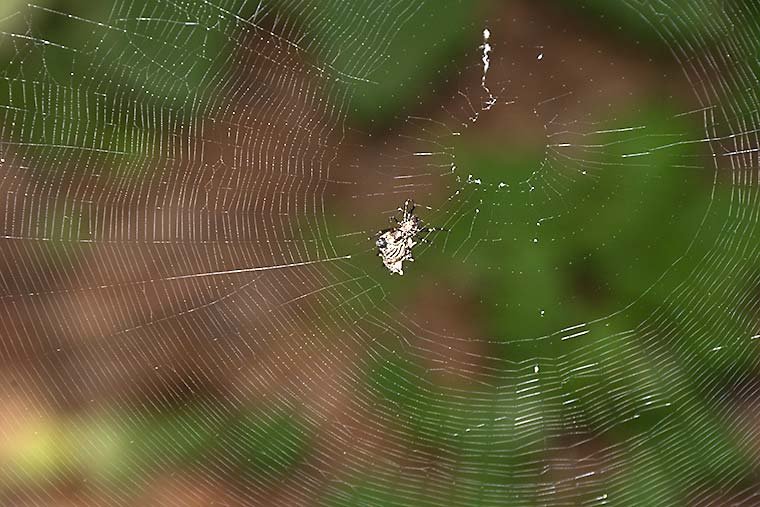
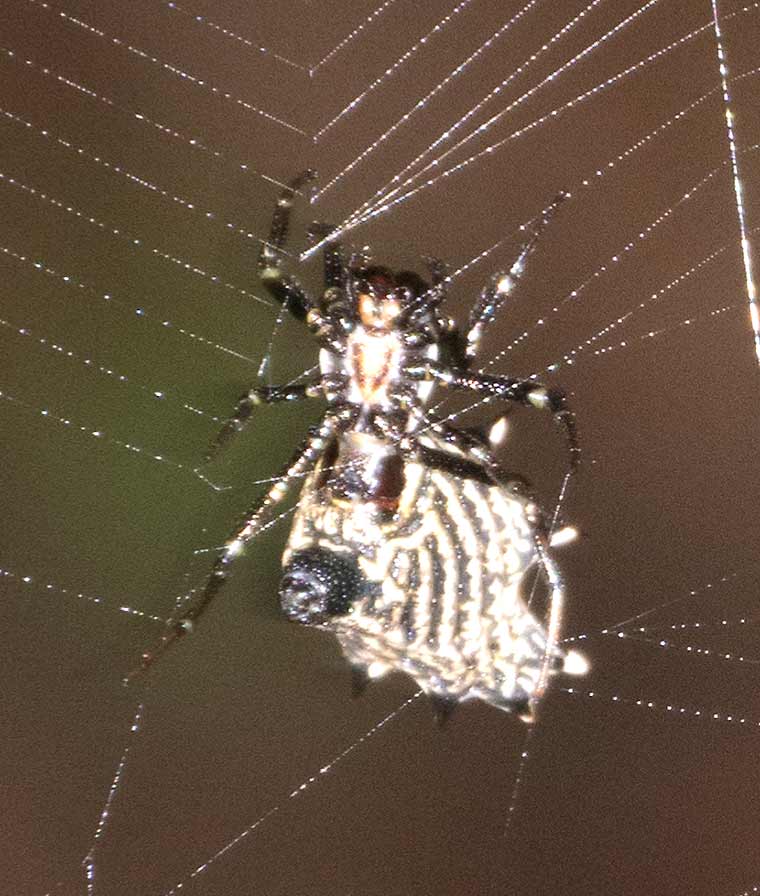
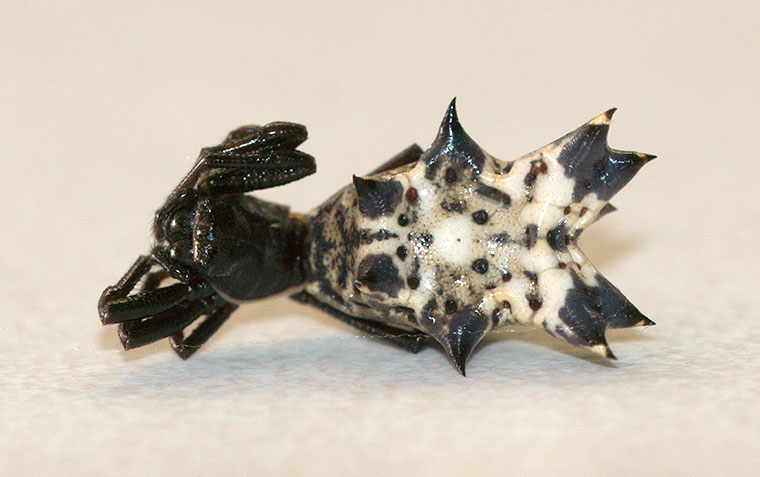
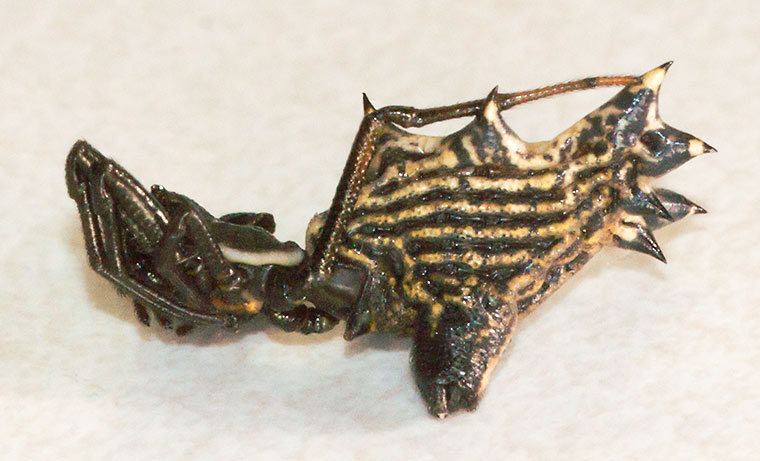
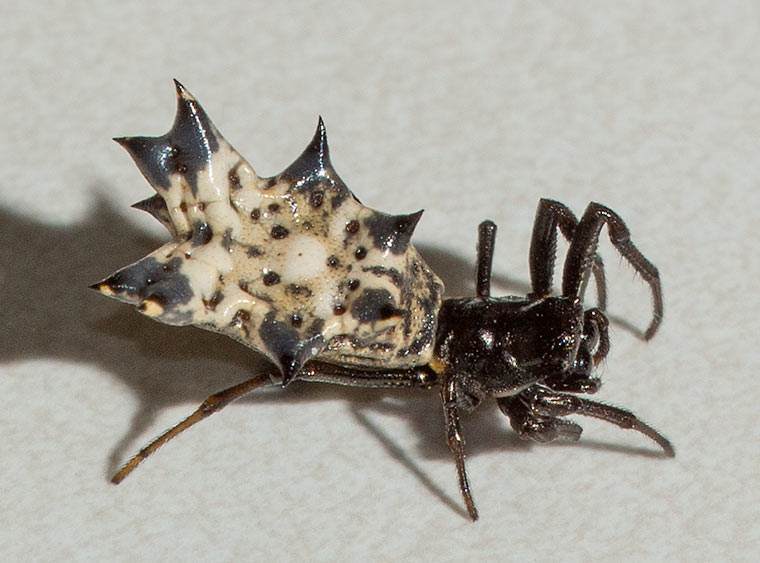
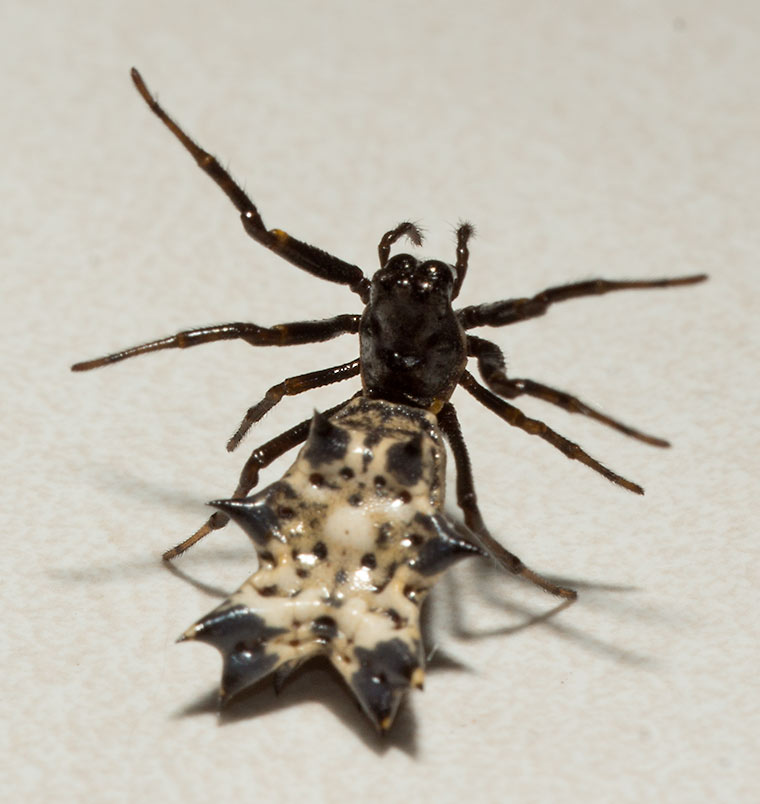
Always wonderful, and enlightening.
Glad you liked it.